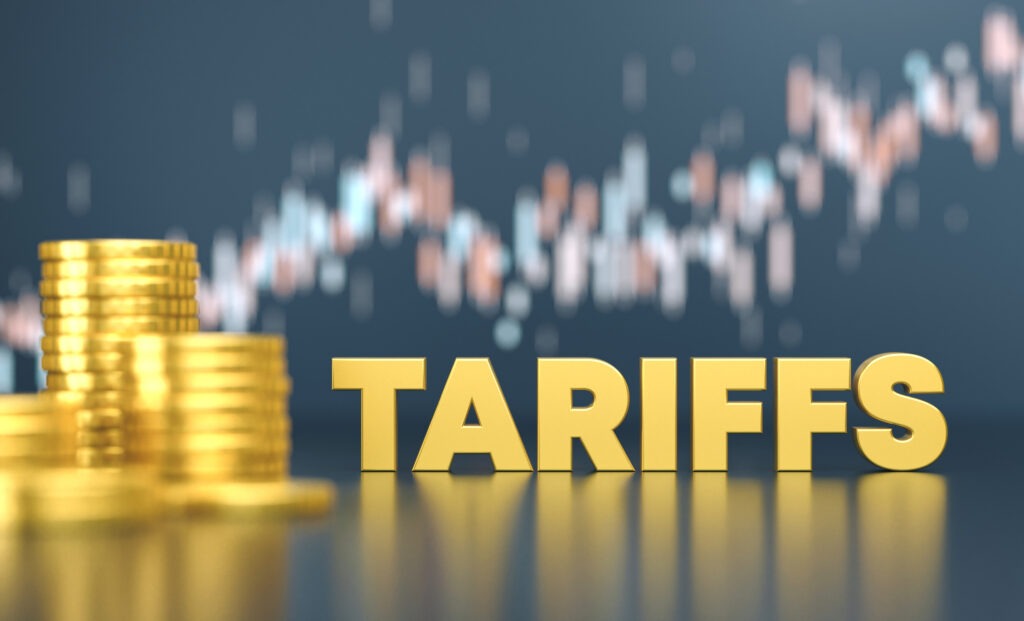What Is a Tariff? A Simple Guide to the U.S. Tariff Policy and Its Impact on India
On Monday, April 7, the Indian stock market opened to a sharp decline. The Sensex dropped to 71,449.94 points — a fall of 3,914.75 points right at the opening bell. Analysts are linking this steep fall to the Trump-era tariff policies making a comeback.
But what exactly is atariff, and why does it matter so much? Why is the world’s stock market reacting so strongly? And how does it affect India specifically?
Let’s break it down.
What Is a Tariff?
In the simplest terms, atariff is a taxthat a government places on imported goods and services. Whenever a product crosses a country’s border, the importing party has to pay a fee (the tariff) to the government.
Tariffs serve multiple purposes — not just revenue generation, but also strategic economic control.
Two Main Types of Tariffs:
Ad Valorem Tariff:
This is a percentage-based tax on the value of the product.
Example:If a product costs ₹1,000 and the tariff is 10%, the importer pays ₹100 as tax.Specific Tariff:
This is a fixed amount per unit, regardless of the product’s value.
Example:₹50 per kilogram of an imported item.
Why Do Countries Impose Tariffs?
Tariffs aren’t arbitrary. Governments implement them to protect national interests. Here’s why:
1.Protecting Domestic Industries
When imported products are cheaper, consumers prefer them over local goods. Tariffs raise the price of imports, encouraging people to buy locally-made alternatives. This supports domestic manufacturers and creates jobs.
2.Generating Revenue
Especially in developing countries, tariffs are a significant source of income where income tax or direct taxation has limitations.
3.Balancing Trade Deficits
Countries that import more than they export face trade imbalances. Tariffs reduce excessive imports and push domestic production and exports — improving the balance of trade.
U.S. Tariffs by Country: A Look at the Trump-Era Reciprocal Policy
The U.S. under President Donald Trump introduced areciprocal tariff policy. This meant: if a country imposed high tariffs on American goods, the U.S. would respond with equal or higher tariffs on that country’s exports.
Here’s a snapshot of how much tariff the U.S. has imposed on imports from various countries:
| Country | Tariff Percentage |
|---|---|
| China | 54% |
| Cambodia | 49% |
| Laos | 48% |
| Vietnam | 46% |
| Sri Lanka | 44% |
| Myanmar | 44% |
| Bangladesh | 37% |
| Thailand | 36% |
| Taiwan | 32% |
| Indonesia | 32% |
| Pakistan | 29% |
| India | 27% |
| Kazakhstan | 27% |
| South Korea | 25% |
| Japan | 24% |
| Malaysia | 24% |
| Brunei | 24% |
| Philippines | 17% |
| Singapore | 10% |
Why Does India Impose Higher Tariffs Than the U.S.?
India’s economic policy has historically leaned towardsprotectionism. The government intentionally places higher tariffs on foreign goods to shield domestic industries from global competition. This allows local businesses more time to grow and stabilize.
On the other hand, the U.S. has long supportedfree trade, with relatively low tariffs across the board. However, the Trump administration argued that if India is placing heavy taxes on American goods, then the U.S. should do the same to maintain fair trade practices.
This created tensions, and both nations started revisiting their trade policies — leading to newtariffimpositions.
How Could These U.S. Tariffs Hurt India?
India exports a wide range of goods to the U.S., including:
Pharmaceuticals
Automobiles and auto parts
Steel and electronics
Textiles and garments
If the U.S. enforces tariffs of up to 27% on Indian goods, it could have several consequences:
🔹 Indian Goods Will Become More Expensive
American buyers — businesses and consumers alike — may shift to cheaper alternatives from other countries.
🔹 Drop in Export Volumes
Reduced demand from the U.S. would affect Indian exporters. This could lead to inventory pile-ups and production slowdowns.
🔹 Financial Losses for Indian Companies
Lower export revenues would directly impact company profits, investor confidence, and potentially lead to layoffs in export-heavy sectors.
Frequently Asked Questions (FAQs)
1. What’s the difference between a tariff and a regular tax?
A regular tax (like income tax or sales tax) is applied internally. Atariff, on the other hand, is specifically imposed ongoods coming from outside the country, i.e., imports.
2. Do tariffs benefit or hurt consumers?
In the short term, tariffsincrease pricesof imported goods, which can hurt consumers. However, they are intended to help domestic businesses grow, which may benefit consumers in the long term.
3. Can India benefit from the U.S.–China trade war?
Yes, India could gain if U.S. companies diversify their suppliers away from China. However, to truly benefit, Indian exporters must ensure competitive pricing, faster delivery, and consistent product quality.
📢If you found this article helpful, share it with others and help spread awareness.
For more simplified, well-researched takes on global economic developments, stay connected withTechaaj.
(Read the latest Tech news of the country and the world first on TechAaj (Tech Today News), follow us on Facebook, Twitter, Instagram and YouTube)











